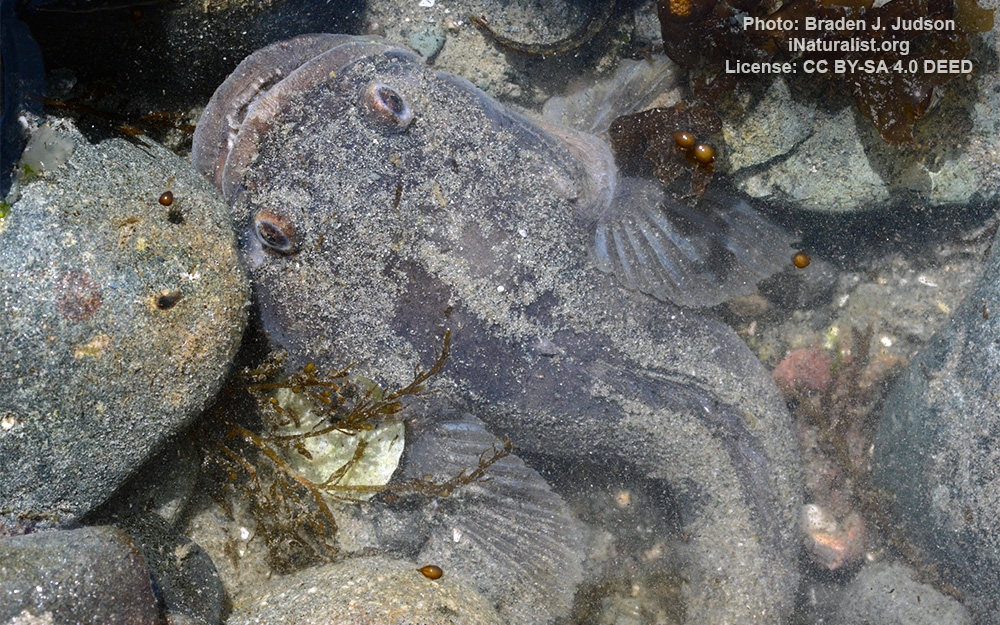Plainfin midshipman
(Porichthys notatus)

Image source: Braden J. Judson | inaturalist.org
Classification
General data
Porichthys notatus is a species of batrachoid toadfish. It is a member of the midshipman genus, Porichthys, and is known by the common name plainfin midshipman. It is native to the eastern Pacific Ocean, where its distribution extends along the coast from Sitka, Alaska, to Magdalena Bay in southern Baja California.
This fish reaches up to 38 cm (15 in) in length. It is brownish to olive to iridescent purple dorsally, becoming lighter on the sides and yellowish/golden on the belly. Below the eye is a whitish patch and black crescent. A young individual may have a dark saddle-mark. P. notatus has wide pectoral fins and a narrow but rounded tail fin.
Except when breeding, the typical habitats for this marine fish are sandy and muddy bottoms from shallow water just below the tide to depths of 366 m (1,200 ft).
Its diet includes crustaceans and fish. It is nocturnal, feeding at night and resting during the day, when it buries itself in the sand.
Both male and female of the species produce vocalizations. The female may produce a brief grunting sound, usually in agonistic encounters. The Type II male performs similar behaviors. The Type I male is much more vocal, both in conflict situations and in courtship. He utters long strings of shorter grunts and growls while fighting, but his courtship call is more of a prolonged hum. He may produce this sound for over an hour at a time, reaching frequencies near 100 Hz. When a male makes the sound, gravid females respond by moving toward him.
P. notatus is bioluminescent. It has photophores in the skin of its head and much of its body. One fish has over 700 photophores, each about a millimeter wide. They contain luciferin. Norepinephrine activates them, producing a distinct fluorescent green glow. The fish is only luminescent during courtship. It may however, play a role in predator avoidance, as well. In the juvenile, photophores point ventrally, directing their illumination downwards. This helps to shadow the fish in a silhouette that might make it harder for predators to see.










